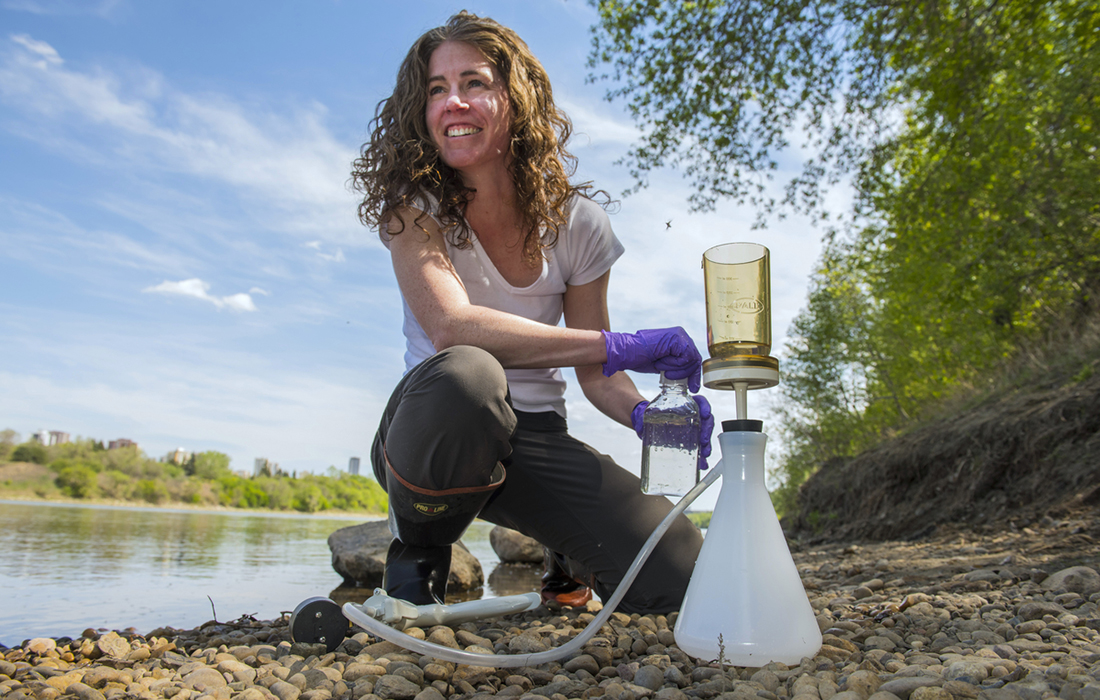
Though freshwater ecologist Suzanne Tank and her research team collected a few samples for the new study, the majority of the data came from an Environment Canada dataset collected over nearly four decades, beginning in the early 1970s.
A new study from the University of Alberta has uncovered a 39 per cent increase in dissolved organic carbon flowing from the Mackenzie River into the Arctic Ocean, linked to accelerating permafrost melt in the circumpolar North.
"When I actually ran the math and realized that it increased by nearly 40 per cent over 40 years, I was really surprised," says the study's lead author Suzanne Tank, assistant professor and CAIP Chair in Aquatic Ecosystem Health in the University of Alberta's Department of Biological Sciences. "Not only can this tell us about what's happening on land, but it's also really important in understanding what's going on in the ocean."
Much of the dissolved carbon that is transported by the Mackenzie River will be returned to the atmosphere as carbon dioxide, at time scales that range from years to millennia, with potential implications for ocean acidification and the ecological functioning of the river system. "The chemical composition of what's going into the ocean affects the organisms living there and the food web structure. Organic carbon is a major food source for bacteria, so you might see changes in bacterial production and then that could go on to feed organisms higher in the food web."
"Not only can this tell us about what's happening on land, but it's also really important in understanding what's going on in the ocean."
The source carbon originates in the topmost layer of soil, which is rich in organic matter thanks to plant growth. Normally this carbon is locked up in permafrost, but with permafrost thaw accelerating, more and more carbon is unearthed. This can happen slowly through gradual warming of soils, or catastrophically with slumping or landslide events where large sections of earth break off and collapse at once. In addition, thaw-induced changes in how water flows across landscapes can cause carbon closer to the surface to be transported to river networks.
"We know that thaw depth is deepening at many places throughout the Arctic, and we also know that the prevalence of these slumps is increasing in magnitude as well," says Tank. "We have good evidence here to say that changes in climate and permafrost degradation are causing this mobilization."
Covering more than 1.8 million square kilometres of northwestern Canada-close to a fifth of Canada's landmass-the Mackenzie River watershed is second in size only to the Mississippi in North America, dumping some 300 trillion litres of water annually into the Arctic Ocean.
The research was conducted mainly using a robust data set from Environment Canada, which included discharge data (the volume of water flow) and concentration data (its chemical composition). The data, gathered from points throughout the Mackenzie basin over four decades from 1972 to 2012, also show a 12 per cent increase in dissolved inorganic carbon.
"Having this decades-long data set for a big river in the Arctic is unique. It's really a testament to the value of this type of long-term data collection," says Tank, who discovered the data following her post-doctoral work with the Arctic Great Rivers Observatory. "These types of data sets are critical for understanding how our ecosystems are functioning and how large areas of the North are changing."
The findings were recently published in IOPscience: "Multi-decadal increases in dissolved organic carbon and alkalinity flux from the Mackenzie drainage basin to the Arctic Ocean."